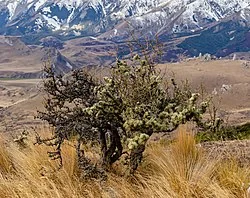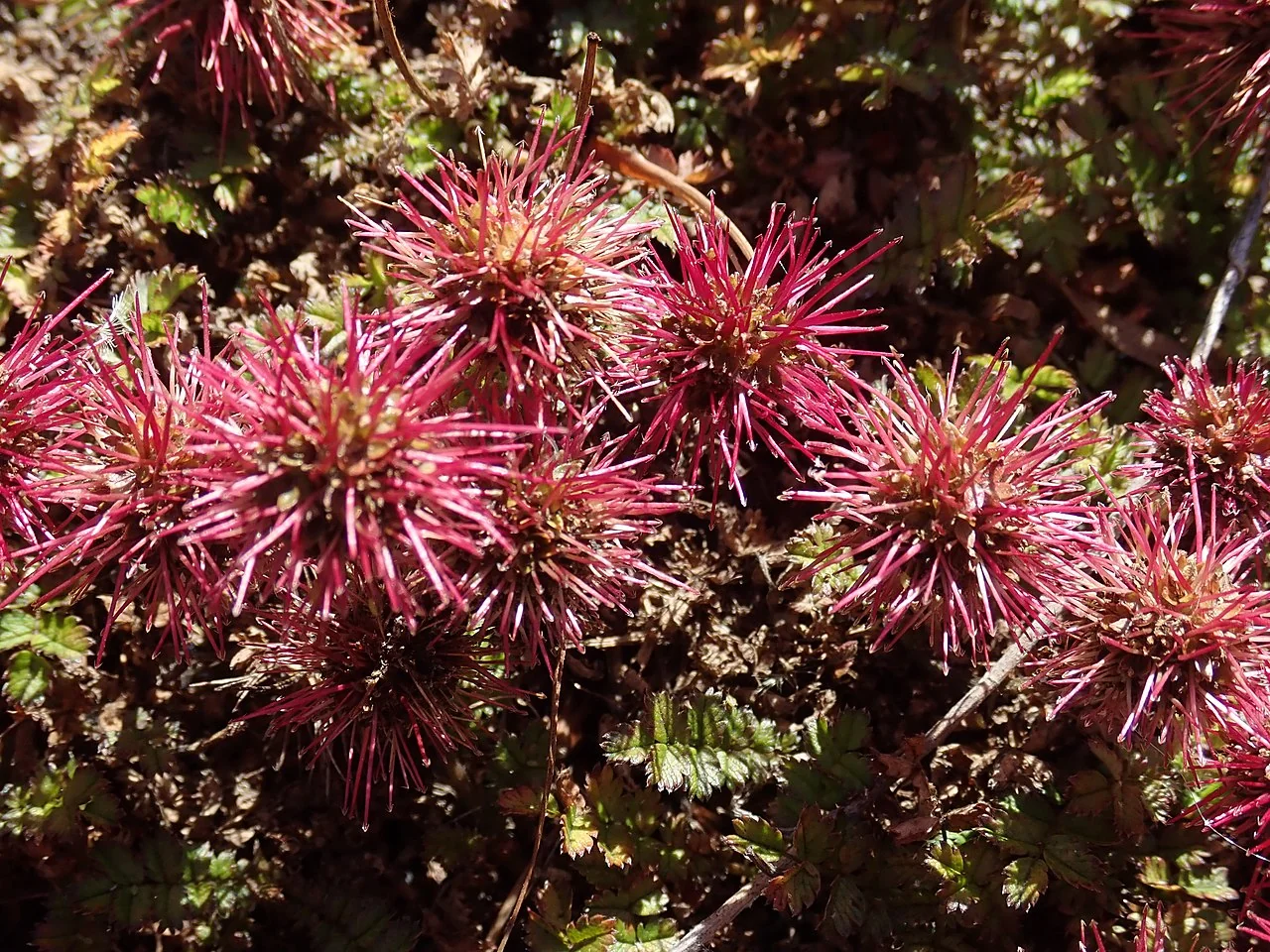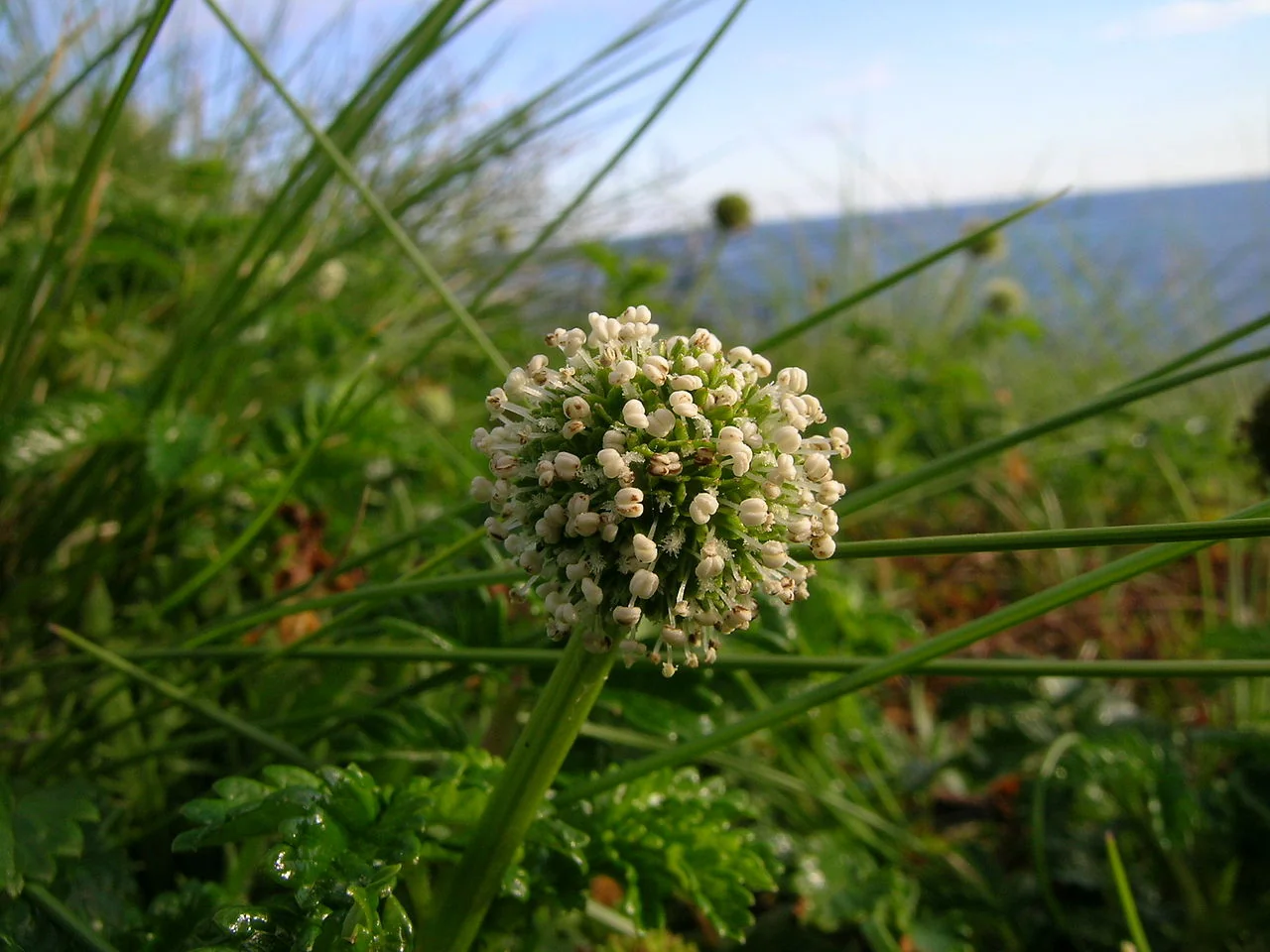
Matagouri
Discaria toumatou
Matagouri ( Discaria toumatou ), known as tūmatakuru in Te Reo Māori and colloquially called "wild Irishman," stands as one of New Zealand's most distinctive and ecologically crucial native shrubs , creating impenetrable thorny thickets that serve as natural fortresses for wildlife in the country's dry inland regions. This remarkable plant represents the ultimate adaptation to New Zealand's harsh continental climates, with its extensive network of zig-zagging branches armed with formidable green spines up to 5cm long - making it the only native New Zealand plant to evolve such elaborate defensive weaponry. The shrub's seemingly hostile exterior conceals a remarkable ecological story, as matagouri functions as a nitrogen-fixing pioneer species that literally transforms barren landscapes by enriching soils and creating shelter that enables other plants to establish in otherwise inhospitable environments. Its intricate branching structure creates a living maze that provides crucial nesting sites and protection for small native birds, lizards, and invertebrates, while its inconspicuous but fragrant flowers produce some of New Zealand's finest honey when accessible to brave beekeepers. The plant's deciduous nature marks the changing seasons in the dry grasslands and river terraces where it dominates, with fresh green leaves appearing in spring before dropping in summer to reveal the stark beauty of its architectural branching. Found primarily in the South Island's rain-shadow regions east of the Main Divide, where it can form extensive colonies across thousands of hectares, matagouri has become increasingly important for conservation as it provides habitat for threatened species like native skinks and geckos that shelter within its protective embrace. Despite its fearsome reputation among farmers and trampers, this remarkable shrub represents one of nature's most effective examples of ecological engineering, single-handedly creating habitat complexity in landscapes that would otherwise support little wildlife. The plant's ability to thrive in extreme conditions - from river gravels to rocky hillsides - combined with its role as a nurse plant for forest regeneration makes it an unsung hero of New Zealand's ecosystem restoration efforts.

Plant Description
Botanical Features
Discaria toumatou , commonly known as Matagouri, Tūmatakuru, or Wild Irishman, is a thorny, tangle-branched shrub or small tree endemic to New Zealand. It can grow up to 5-6 meters tall and is characterized by its spiky, grey appearance with zig-zagging, flexible twigs. It possesses long, stiff, sharply pointed spines, up to 5 cm in length, which are green when young and turn grey with age. This is the only native New Zealand plant with such prominent spines. The leaves are small, leathery, oval, and dark green, typically 10-20 mm long, and are often found close to the thorns or in clusters beneath the spines. The plant is deciduous, with leaves most abundant in spring or in shaded areas. Tiny, inconspicuous, and scented white flowers appear in mid-spring, followed by a dry, globose, 3-sided capsule, approximately 5 mm in diameter. It is commonly found in the eastern South Island of New Zealand, thriving in tussock grasslands, stony areas, and river beds, and is known for its drought tolerance. Matagouri is a nitrogen-fixer, enriching the soil and providing habitat and food sources for native birds and insects.
Quick Facts
| Scientific Name | Discaria Toumatou |
|---|---|
| Height | 1-4 m |
| Spread | 2-5 m |
| Water Needs | Very low |
| Light | Full sun |
| Frost Tolerance | Excellent |
| Salt Tolerance | Moderate |
| Growth Rate | Slow to moderate |
| Lifespan | Very long |
Climate Best Suited to
Matagouri ( Discaria toumatou ) thrives in dry, inland areas with good drainage and tolerance for harsh conditions. It adapts well to typical New Zealand growing conditions with appropriate care and positioning.
Regional Suitability
| Whangārei | Ideal |
| Auckland | Ideal |
| Hamilton | Suitable |
| Rotorua | Suitable |
| Tauranga | Ideal |
| Gisborne | Ideal |
| New Plymouth | Ideal |
| Whanganui | Ideal |
| Palmerston North | Suitable |
| Napier | Ideal |
| Wellington | Ideal |
| Nelson | Ideal |
| Christchurch | Suitable |
| Dunedin | Suitable |
| Invercargill | Suitable |
| City | Climate Suitability |
|---|
Natural Habitat
Matagouri is a classic plant of the dry, eastern side of the South Island, where it is a key feature of tussock grasslands, stony riverbeds, and rocky hillsides. It is a true survivor, adapted to thrive in harsh conditions, including drought, frost, and strong winds. Its ability to fix nitrogen allows it to grow in nutrient-poor soils, making it an important pioneer plant in these challenging environments.
Plant Conservation
Discaria toumatou , commonly known as matagouri or tūmatakuru, is a thorny, tangle-branched shrub or small tree endemic to New Zealand. While generally common and stable in much of New Zealand's South Island, Discaria toumatou is considered "At Risk - Declining" in the North Island, where it is significantly less common and faces threats. In some North Island areas, such as Whanganui, it has become extinct. The primary threats to Discaria toumatou include habitat loss and degradation, particularly in the North Island, due to land-use changes, clearing, burning, or poisoning by farmers for pasture. Competition from introduced plants like gorse and broom negatively impacts its survival, and possums can damage trees by ring-barking them. Conservation efforts for Discaria toumatou focus on habitat protection and restoration, minimizing disturbance, invasive species control, awareness and education, active propagation, and legal protection. Cultivation is also encouraged to aid in its propagation and reintroduction.
Growing Requirements
Soil Requirements
Matagouri ( Discaria toumatou ) performs best in well-draining soil that retains adequate moisture. Like most New Zealand natives, it prefers soils that don't become waterlogged but maintain consistent moisture levels. Good drainage is essential for healthy root development.
- Well-draining soil essential for healthy growth
- Prefers consistent moisture without waterlogging
- Adapts to various soil types with good drainage
- Benefits from organic matter incorporation
- Mulching helps retain moisture and suppress weeds
Light Requirements
Matagouri ( Discaria toumatou ) performs well in full sun to partial shade conditions. Like many New Zealand natives, it adapts to various light conditions but typically shows best growth and form in positions that receive adequate sunlight throughout the day.
- Full sun to partial shade positions
- At least 4-6 hours of direct sunlight daily
- Tolerates light shade in warmer climates
- Morning sun particularly beneficial
Water Requirements
Matagouri ( Discaria toumatou ) requires regular watering during establishment, typically for the first 1-2 years. Once established, it becomes more drought-tolerant but benefits from consistent moisture during dry periods. Avoid overwatering which can lead to root problems.
- Regular watering during establishment phase
- Moderate drought tolerance once established
- Consistent moisture during dry periods beneficial
- Avoid waterlogged conditions
- Mulching helps conserve soil moisture
Planting Guide
Matagouri is an incredibly tough and resilient plant, perfectly adapted to the harsh conditions of New Zealand's drylands. While its thorns can be formidable, it is a valuable plant for restoration projects and for creating impenetrable hedges.
Site Selection
- Light: Matagouri thrives in full sun. It will tolerate some light shade, but for best growth and flowering, a sunny spot is essential.
- Soil: This shrub is not fussy about soil type, as long as it is well-draining. It will happily grow in gravelly or rocky soils where other plants struggle.
- Space: Allow plenty of room for this plant to spread. Its tangled, spiny branches will eventually form a dense thicket.
Planting Instructions
- Timing: Plant in autumn or spring to allow the plant to establish before the extremes of summer or winter.
- Planting: Wear sturdy gloves when handling this plant. Dig a hole twice the width of the root ball and plant to the same depth as the container. Water in well.
Ongoing Care
- Watering: Water regularly during the first year. Once established, Matagouri is extremely drought-tolerant and will require very little additional watering.
- Pruning: Pruning is not usually necessary. If you need to control its size, prune in winter when the plant is dormant.
Ecological Role
Environmental Benefits
Matagouri ( Discaria toumatou ) is a spiny, actinorhizal nitrogen-fixing shrub that pioneers dry river terraces, moraines, and hill country in eastern Aotearoa. In symbiosis with Frankia bacteria, it enriches lean soils, paving the way for grasses and later woody species. Its dense, prickly canopy shelters small birds and invertebrates in otherwise exposed sites, and spring flowering draws pollinating insects.
- Nutrient engineer: Root nodules fix nitrogen, improving soil fertility for successional species.
- Refuge and nesting: Thorny architecture provides safe perches and cover on open terraces.
- Pioneer on gravels: Establishes on stony, drought-prone substrates, stabilising surfaces against erosion.
Uses and Significance
Garden Uses
- Excellent for native plant gardens and restoration
- Suitable for naturalistic landscape designs
- Low maintenance once established
- Contributes to local biodiversity
- Attractive to beneficial native wildlife
Cultural Significance
Discaria toumatou , also known as matagouri, tūmatakuru, or wild Irishman, holds significant cultural importance, particularly for the Māori people of New Zealand.
Key Aspects of Cultural Significance Include:
- Traditional Māori Uses: Māori traditionally utilized the plant for various practical purposes. Its thorny branches were fashioned into fences, hedges, and traps, providing effective protection and deterrence. The spines were also used for tattooing when other tools were unavailable.
- Medicinal Applications: Māori used matagouri medicinally to treat ailments such as skin conditions and joint pain.
- Etymology: The name "matagouri" is derived from the Māori words "mata" (face) and "gouri" (stick), referencing its sharp thorns that resemble a face covered in spears. The Latinized specific epithet "toumatou" is a corruption of the Māori word "tūmatakuru," one of its Māori names.
- Folklore: In Māori traditions, figures like Tutekoropaka and Tama are associated with introducing prickly plants, including tūmatakuru, to New Zealand, often to aid in evading pursuers or during their travels.
Despite its historical use and ecological role, matagouri has faced threats from agricultural practices, leading to its decline in some areas. Conservation efforts are underway to protect and restore populations of this culturally and ecologically important native shrub.
Landscaping Uses
While its formidable thorns might make it seem like an unlikely garden plant, Matagouri's unique character and ecological benefits make it a valuable addition to certain landscaping situations. Its rugged, architectural form and extreme hardiness are assets in the right context.
Key Landscaping Applications:
- Impenetrable Hedging: Matagouri is an excellent choice for creating a dense, impenetrable hedge or barrier. Its tangled, thorny branches will deter even the most determined intruders, making it a natural and effective security screen.
- Restoration and Revegetation: As a nitrogen-fixing pioneer plant, Matagouri is invaluable in restoration and revegetation projects, especially in dry, degraded, or erosion-prone areas. It helps to improve soil fertility and creates a sheltered microclimate for other, less hardy native plants to establish.
- Wildlife Gardens: The dense, protective thickets of Matagouri provide a safe haven for native birds to nest and roost, and for lizards and invertebrates to shelter. Its small, fragrant flowers are also a valuable source of nectar for bees and other insects.
- Dry and Alpine Gardens: Matagouri is perfectly adapted to dry, sunny, and exposed conditions. It is an excellent choice for rock gardens, gravel gardens, and other low-water landscaping schemes where other plants would struggle.
When planting Matagouri, it is essential to give it plenty of space and to be mindful of its sharp spines. However, for those looking to create a truly unique, low-maintenance, and ecologically valuable landscape, this remarkable native shrub is an excellent choice.
Seasonal Care Calendar
Spring
Spring is an active growth period for Matagouri ( Discaria toumatou ). New growth emerges and this is an ideal time for planting new specimens. Monitor soil moisture as temperatures warm and growth accelerates.
- Active growth period with new foliage development
- Ideal time for planting new specimens
- Monitor soil moisture as temperatures rise
- Apply organic mulch if needed
Summer
Summer is typically the main growing season for Matagouri ( Discaria toumatou ). Ensure adequate watering during hot, dry periods, especially for young plants. Established plants show good heat tolerance with appropriate care.
- Peak growing season with active development
- Monitor watering needs during hot weather
- Young plants need consistent moisture
- Established plants show good heat tolerance
Autumn
During autumn, Matagouri ( Discaria toumatou ) begins to slow its growth as temperatures cool. This is another good time for planting as conditions become more favorable. Reduce watering frequency but maintain soil moisture.
- Growth slows as temperatures moderate
- Good time for planting new specimens
- Reduce watering frequency gradually
- Maintain soil moisture without overwatering
Winter
Winter is typically a dormant period for Matagouri ( Discaria toumatou ), with minimal growth activity. Reduce watering but ensure plants don't completely dry out. Most New Zealand natives are cold-hardy and require minimal winter protection.
- Dormant period with minimal growth activity
- Reduce watering but avoid complete drying
- Generally cold-hardy in most New Zealand climates
- Minimal winter protection required
When to Prune and How Much
Matagouri ( Discaria toumatou ) generally requires minimal pruning to maintain its natural form and health. Most maintenance involves removing dead or damaged growth and light shaping if needed.
- Remove dead, damaged, or diseased growth as needed
- Light pruning to maintain shape if desired
- Prune after flowering if applicable
- Avoid heavy pruning which can stress the plant
- Use clean, sharp tools to prevent disease
- Most natives maintain good form without regular pruning
Always use clean, sharp tools when pruning to minimize disease risk. Native plants typically maintain their natural form well and often require less intervention than exotic species.
How to Grow Matagouri
Matagouri, also known as Wild Irishman, is a remarkably hardy and distinctive native shrub, renowned for its impenetrable thorny thickets and its ability to thrive in harsh, dry inland environments. It is a crucial pioneer species, enriching soils through nitrogen fixation and providing vital shelter for native wildlife. While its formidable spines might deter some, its ecological importance and unique architectural form make it a valuable plant for restoration projects and specialized dryland gardens. Understanding its propagation methods is key to successfully cultivating this resilient species.
From Seed
Propagating Matagouri from seed is a reliable method, though it requires patience due to the hard seed coat. Collect fresh seeds from the small, capsule-like fruits when ripe. To improve germination rates, the seeds benefit from scarification (lightly sanding or nicking the seed coat) followed by a period of cold stratification (placing seeds in a moist medium in the refrigerator for 4-6 weeks). Sow the treated seeds in a well-draining seed-raising mix, lightly covering them. Maintain consistent moisture and provide warm, bright conditions for germination. Germination can be erratic and may take several months. Once seedlings have developed a few true leaves, they can be potted into individual containers and grown in a sheltered location before planting out.
From Cuttings
Matagouri can also be propagated from semi-hardwood cuttings, typically taken in late summer or early autumn from healthy, current season's growth. Cuttings should be about 4-6 inches long. Remove the lower leaves and dip the cut end in a rooting hormone. Plant the cuttings into a well-draining, sterile cutting mix, such as a blend of perlite and sand. Maintain high humidity around the cuttings, perhaps by placing them under a plastic dome or in a propagator, and provide bottom heat to encourage root development. Keep the medium consistently moist but not waterlogged. Rooting can be slow and success rates can vary, making this method more suitable for experienced propagators.
Pests and Diseases
Hardy Shrub with Few Issues
Matagouri ( Discaria toumatou ) is adapted to dry, open sites and is generally trouble-free in well-drained soils. Most problems arise from prolonged wet feet or heavy competition in rich soils.
- Root/collar rot: Waterlogged sites can cause dieback. Ensure sharp drainage and avoid over-irrigation.
- Scale insects: May occur on sheltered stems, leading to sooty mould; prune out badly affected twigs and treat with horticultural oil in winter.
- Browsing: Young plants are vulnerable to rabbits/hares; use guards or netting until well established.
- Wind scorch: Newly planted specimens can defoliate in hot, desiccating winds; water to establishment, then reduce.
Avoid high-nutrient, wet soils; as a nitrogen-fixing shrub, matagouri thrives on lean, stony substrates with full sun and minimal fertiliser.
Bonus Tip
For hedge establishment on dry sites, stagger plants slightly and incorporate a shallow gravel swale upslope to direct brief pulses of water to the root zone without causing waterlogging.







